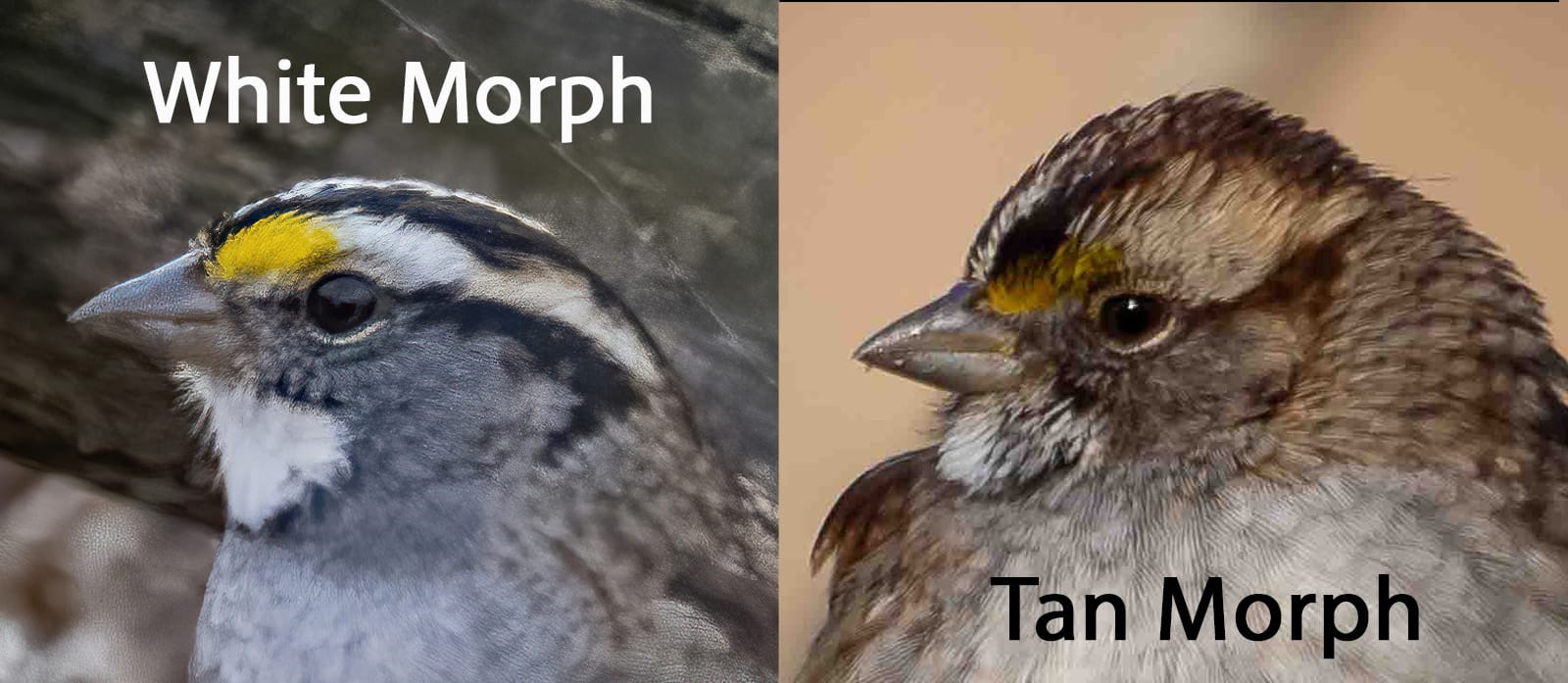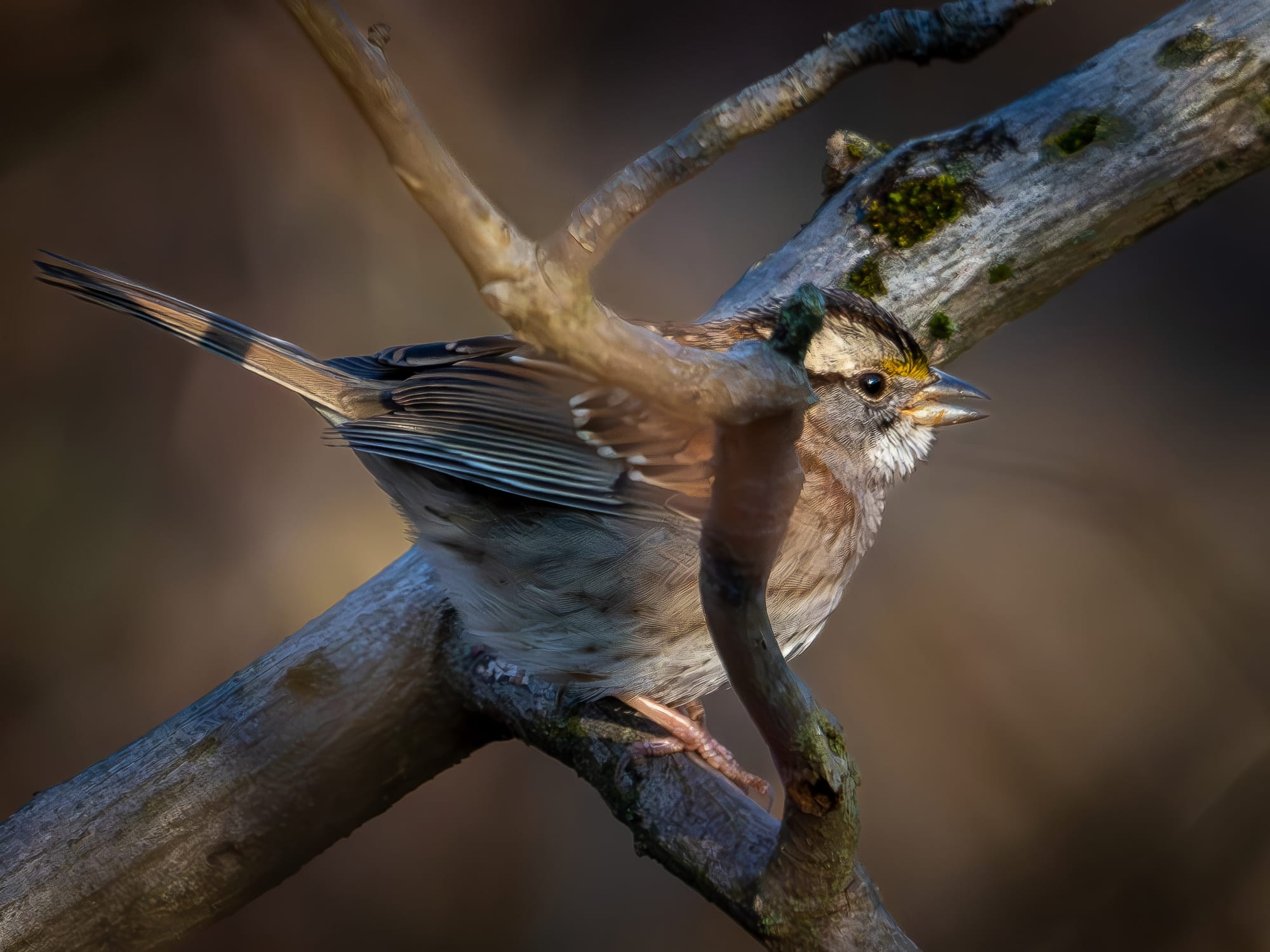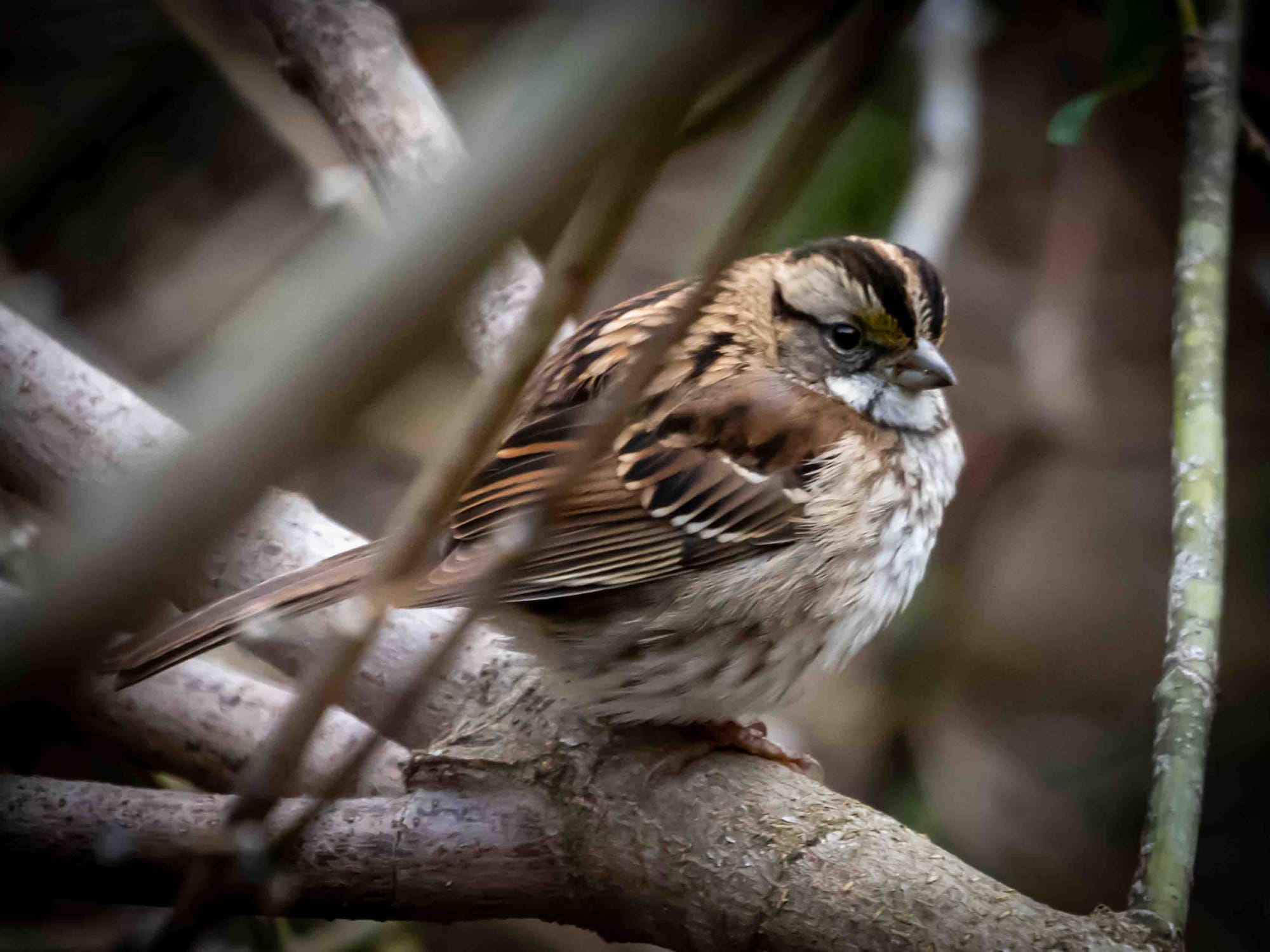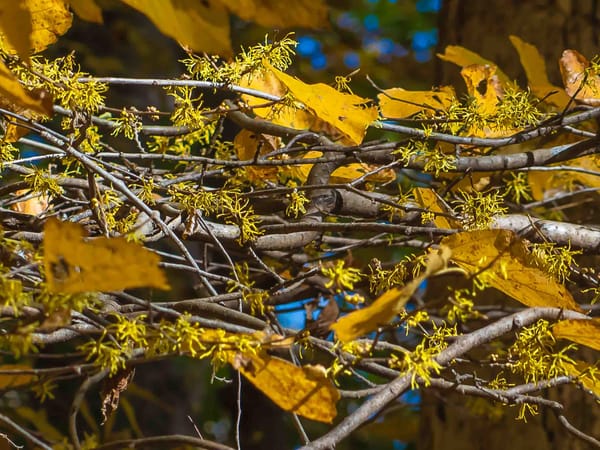Tan Stripes and White Stripes

In the spring most of our White-throated Sparrows migrate north to their breeding range in New England and Central Canada. The other day I heard a distinctive song signaling their return: a beautiful, wistful, slightly melancholy tune.
They will be my constant companions all winter long, calling from the thickets as they go foraging for seeds with other winter birds like the Juncos. See my post about Herds of Birds for more.
The white-throated sparrow has either white or tan stripes on its head, a white morph and a tan morph.

White morphs mate only with tan morphs, and vice versa. They also behave very differently. White morphs are aggressive and sing often but neglect their young, while tan morphs are calmer, faithful partners and attentive parents. The cause for these differences was a long-standing puzzle.
Biologists Elaina Tuttle and Rusty Gonser spent nearly thirty years studying the white-throated sparrow trying to determine the cause.
Tuttle and Gonser's research revealed a major section of one chromosome in the birds had reversed direction, locking more than 1,100 genes together as a single “supergene.” This inversion prevents normal genetic exchange, so instead of blending the morphs remain distinct. White-throated Sparrows behave as if they have four sexes, since each bird can mate with only one quarter of the population.
Their 2016 paper confirmed that this chromosome was evolving in the same way sex chromosomes like the human X and Y do, providing a rare living example of the process.





White-throated Sparrows are cautious but hearty birds, they'll spend the winter fluffed up to stay warm in the shadowy thickets where they spend the day foraging.




